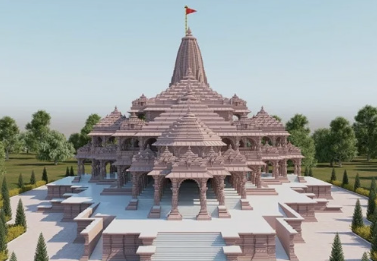
Ram Mandir: A Dream Come True for Millions of Devotees
The ongoing construction of the Ram Mandir in Ayodhya, Uttar Pradesh, India, signifies the establishment of a Hindu temple at the sacred site of Ram Janmabhoomi, believed to be the birthplace of Lord Rama—an eminent deity in Hinduism. Key aspects regarding its mission and historical background are outlined below:

- Mission: The primary objective of the Ram Mandir is to pay homage and offer worship to Lord Rama, serving as a symbolic representation of India’s cultural and religious unity.
- Historical Roots: Tracing its origins to the ancient epic Ramayana, the city of Ayodhya is depicted as the capital of Rama’s kingdom, providing a historical context for the construction of the temple.
- Site Dispute: The location of the Ram Mandir has been a contentious issue spanning centuries. Initially the site of the Babri Masjid, a mosque constructed by Mughal emperor Babur in the 16th century, it became a focal point of dispute between Hindus and Muslims.
- Conflict Escalation: Tensions reached a peak in the late 20th century, marked by violent incidents such as the demolition of the Babri Masjid by Hindu activists in 1992 and subsequent communal riots.
- Legal Resolution: The Supreme Court of India settled the longstanding legal dispute in 2019, ruling in favor of the Hindus and granting them ownership of the land. An alternative site was allocated for Muslims to construct a mosque.
- Commencement of Construction: The construction of the Ram Mandir commenced on 5 August 2020, marked by a groundbreaking ceremony led by Prime Minister Narendra Modi.
- Project Details: The completion of the Ram Mandir is anticipated by 22 January 2024, featuring a towering height of 161 feet and occupying a site area of 2.7 acres.






